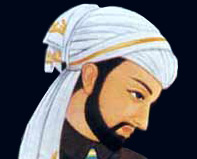Until the nineteenth century, when the practice of printing and distributing literary pieces became feasible and possible, literature in India existed mainly in the oral tradition. Even when literary pieces were circulated in the manuscript form, the general dissemination of any literary work depended on its oral outreach. This includes a range of narrations from scriptures to folksongs, stories, aphorisms and drama.
Source: http://sahitya-akademi.gov.in/sahitya-akademi/projects-schemes/tribal_oral_literature.jsp
Friday, November 12, 2010
Saturday, November 6, 2010
The healing powers of the 'Tale of the Four Dervishes'

The Tale of the Four Dervishes (Ghasseh-e Chahar Dervish, Persian) is a collection of allegorical stories in Persian composed by Amir Khusro, a Sufi mystic, musician, scholar and poet in the late 13th century. The reading or listening to the collection is supposed to have healing powers.
Amina Shah has retold these tales. This is what she writes in her introduction:
“When the great 13th Century Sufi teacher Nizamuddin Awliya was ill, his disciple Amir Khusraw – the eminent Persian poet – recited to him this Sufi allegory. To mark this event, Nizamuddin on his recovery, placed this benediction upon the book:
‘Who hears this story will, by the divine power, be in health’.
“Mir Amman of Delhi translated the work a century and a half ago into Urdu, and ever since it has been regarded as a classic of that language, under the title of ‘Bagh o Bahar’ (Garden and Spring), a chronogram which, when decoded by the Abjad System, produces the date of its completion: Year 1217 of the Hijra Era”.
“It is widely believed that the recitation of the story will restore to health the ailing, and that the allegorical dimensions of the adventures of the Dervishes contained in it are part of a teaching-system which prepares the mind of the Seeker-after-Truth for spiritual enlightenment”.
Source: http://www.chishti.ru/chishti_books.htm
Subscribe to:
Posts (Atom)